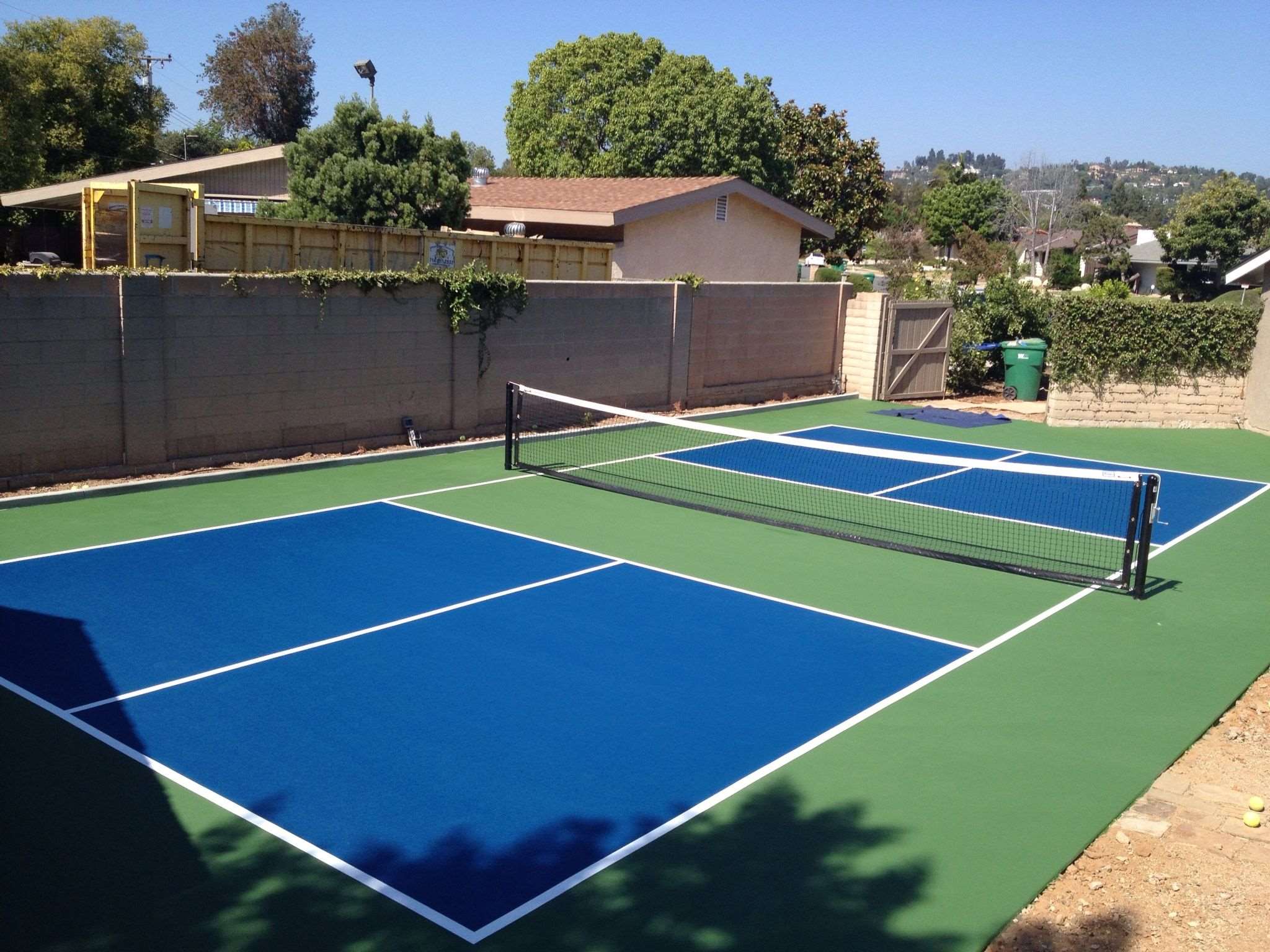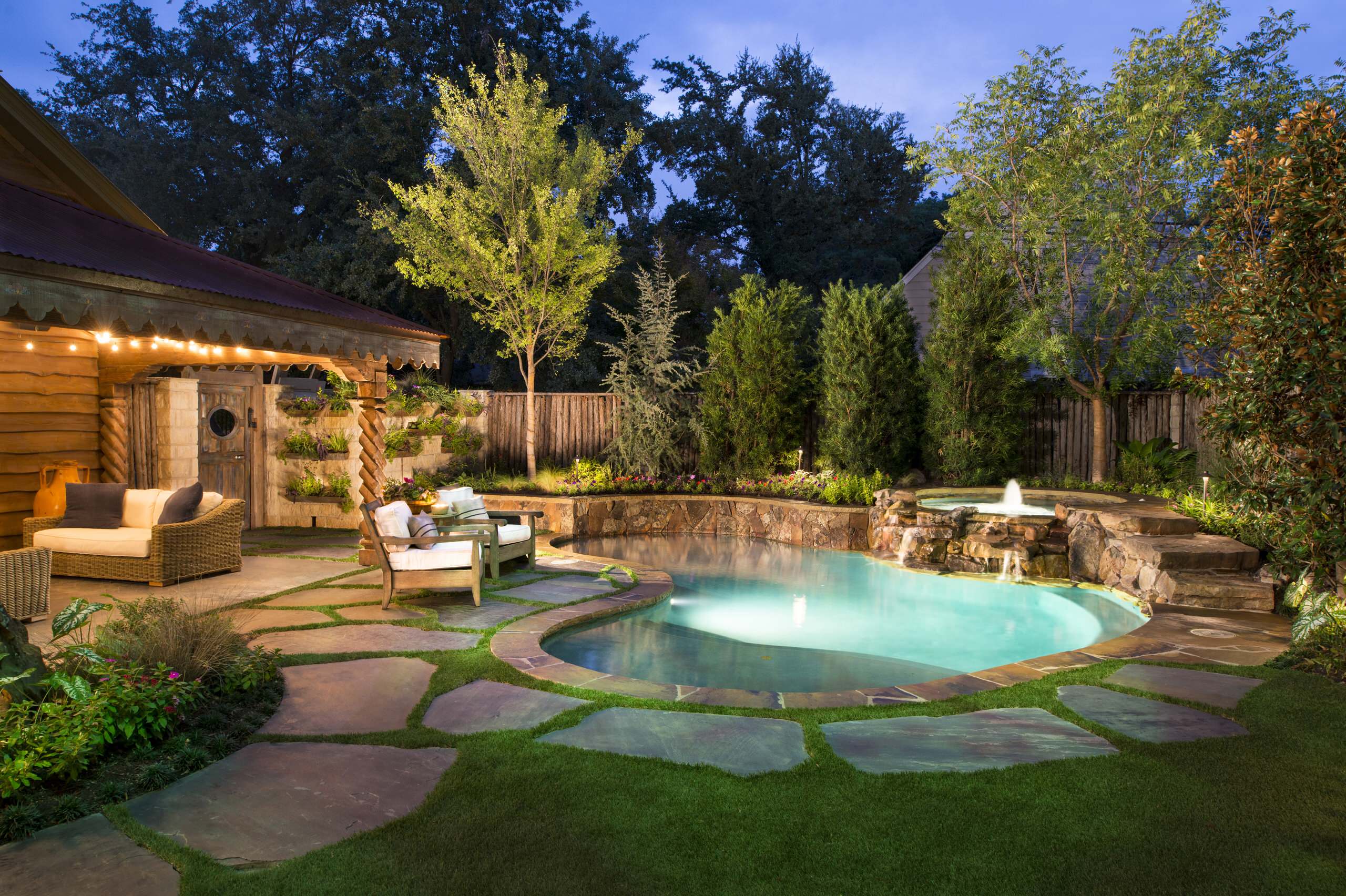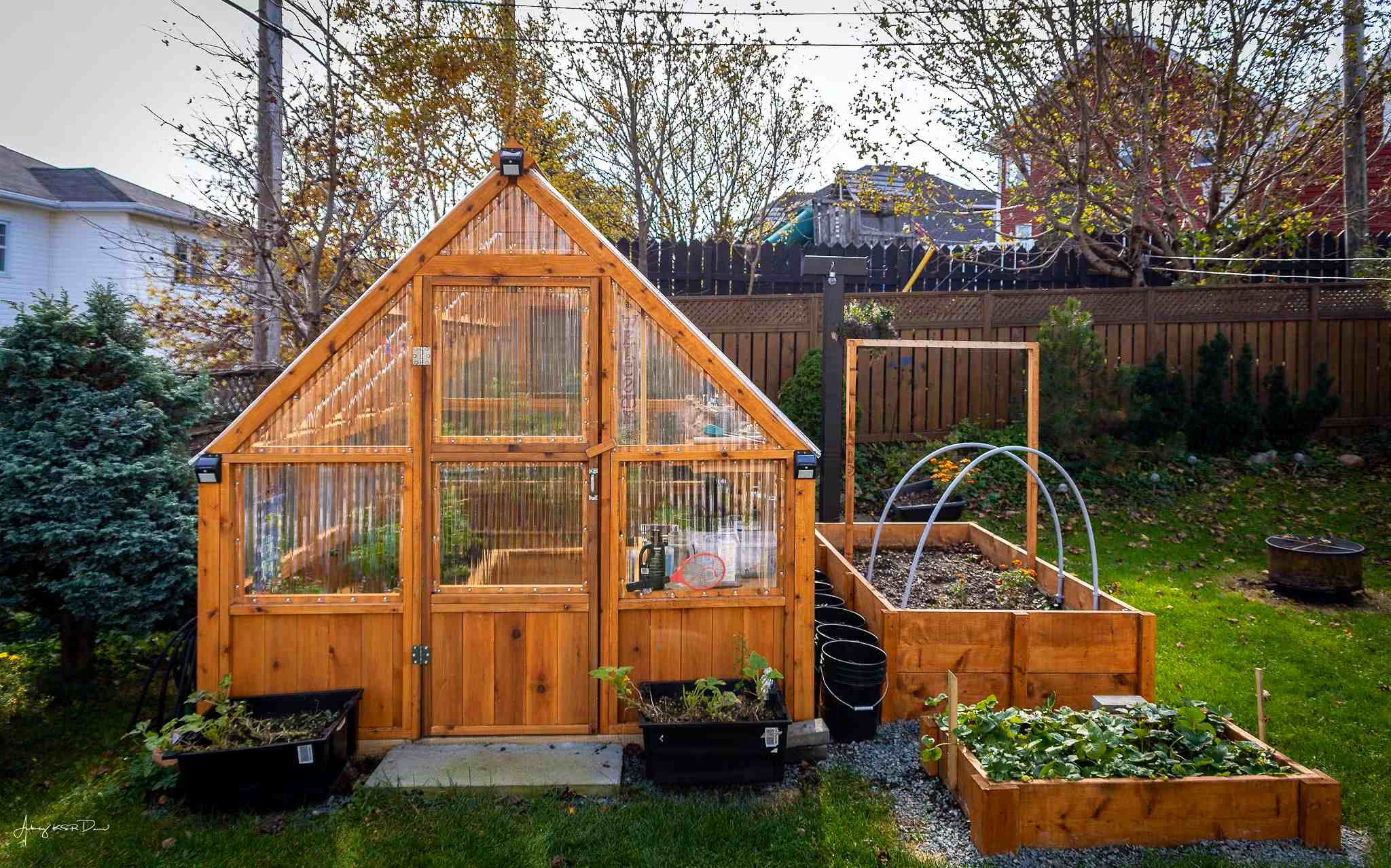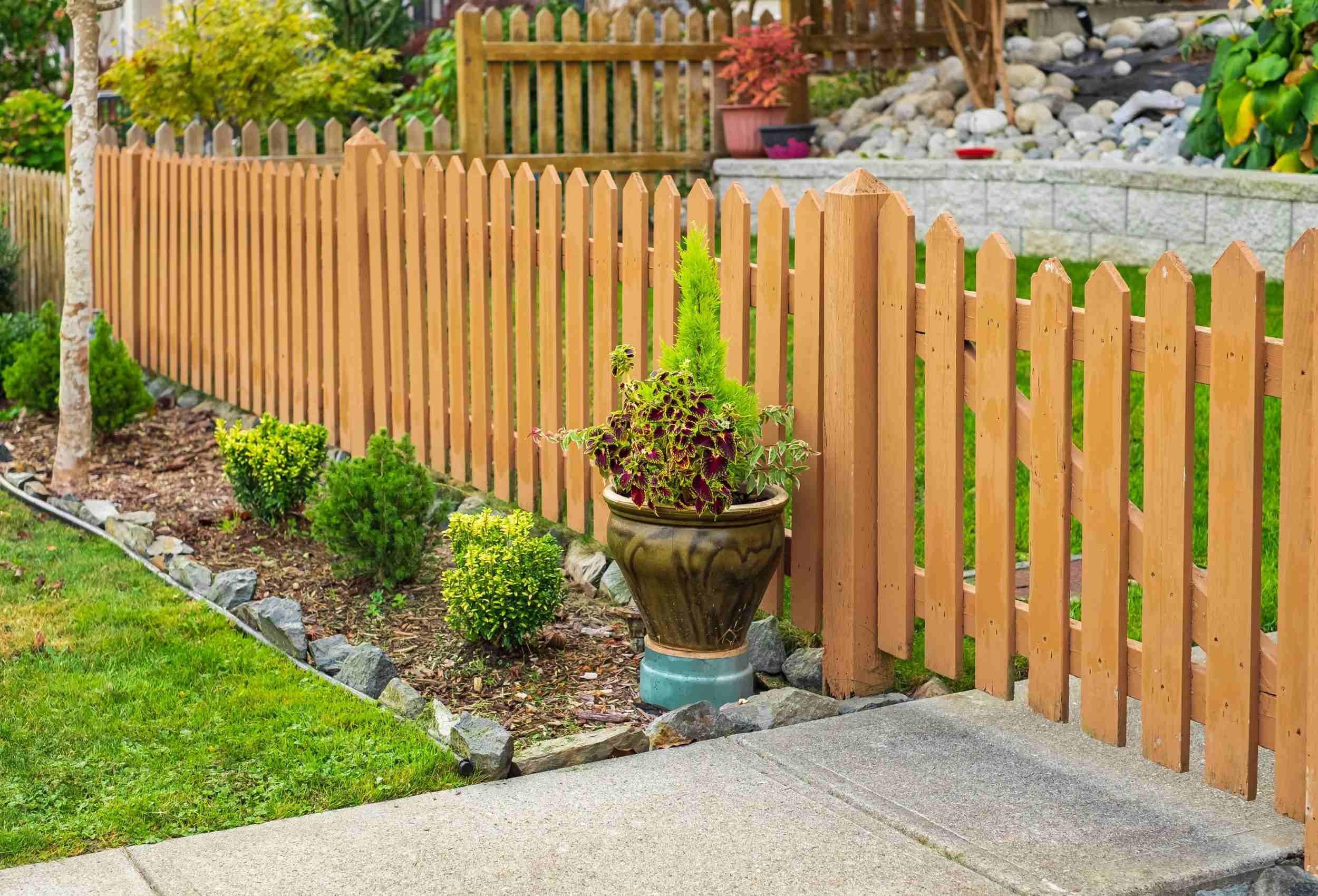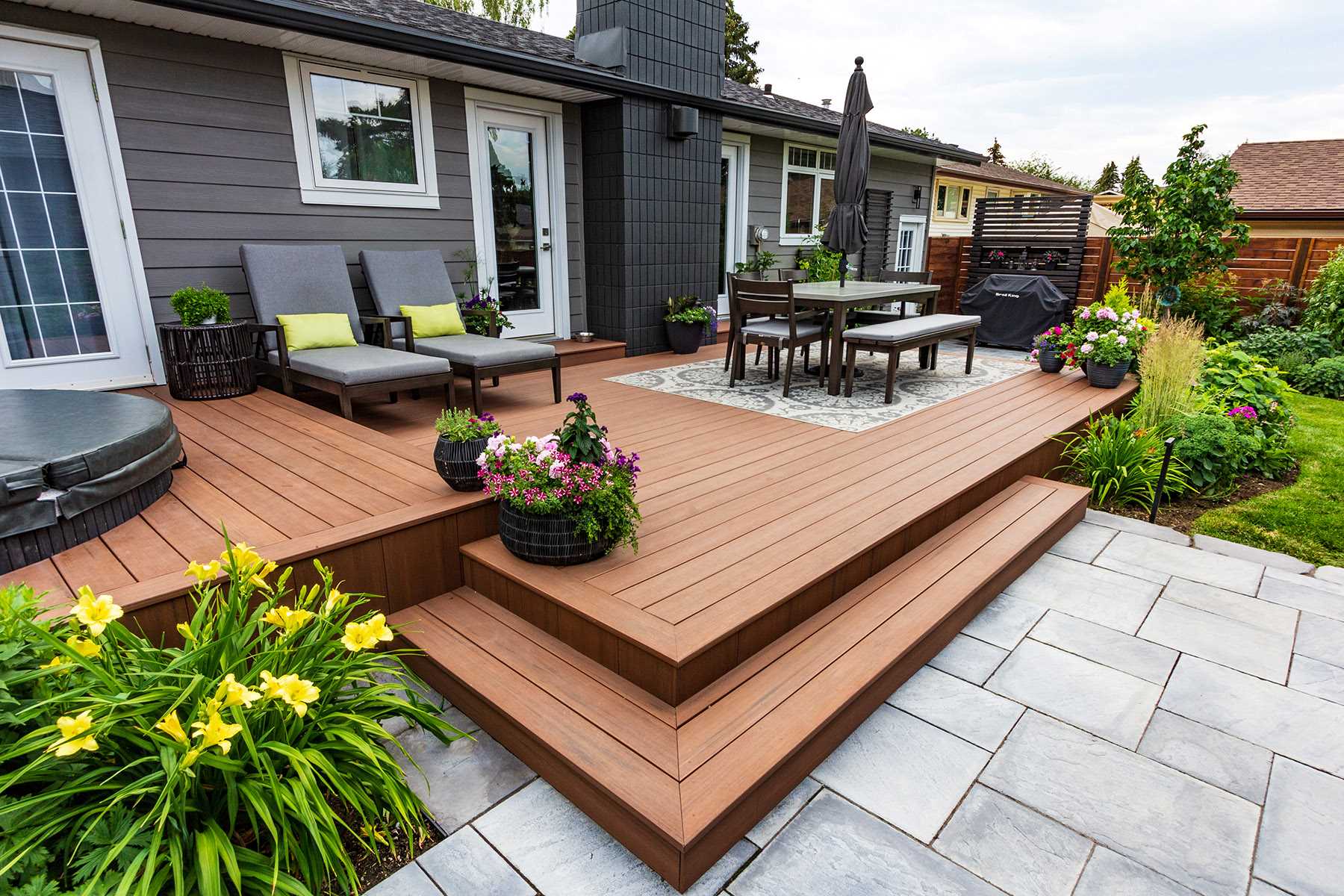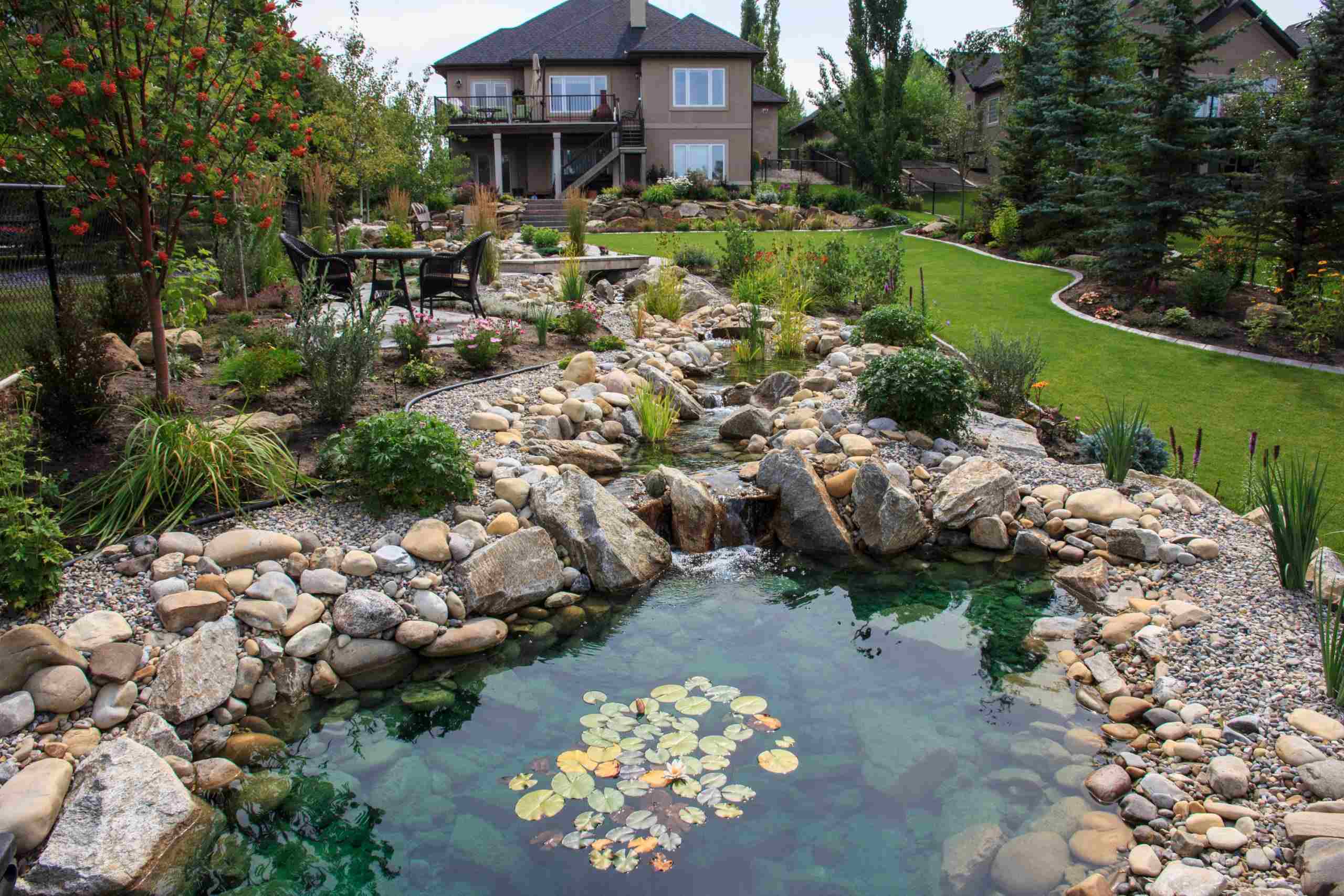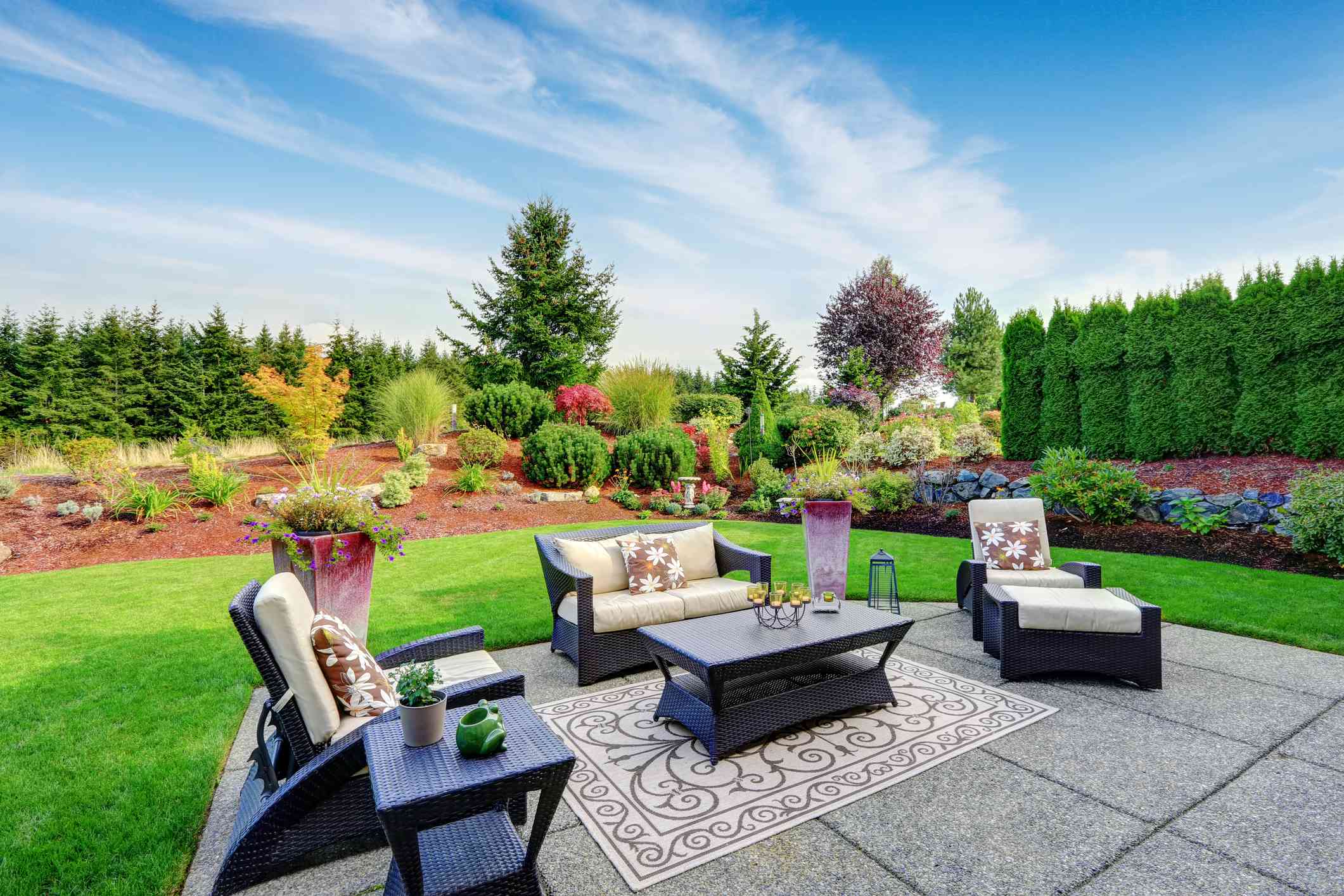Home>Gardening Techniques>DIY Projects>How To Build A Bunker In Your Backyard


DIY Projects
How To Build A Bunker In Your Backyard
Published: August 5, 2023
Learn how to build a bunker in your backyard with this DIY project guide. Create a safe and secure space with step-by-step instructions and expert tips.
(Many of the links in this article redirect to a specific reviewed product. Your purchase of these products through affiliate links helps to generate commission for Chicagolandgardening.com, at no extra cost. Learn more)
Table of Contents
- Introduction
- Step 1: Selecting the Location
- Step 2: Obtaining Permits and Regulations
- Step 3: Designing the Bunker
- Step 4: Excavation and Foundation
- Step 5: Building the Structure
- Step 6: Installing Utilities
- Step 7: Ventilation and Air Filtration Systems
- Step 8: Reinforcements and Security Measures
- Step 9: Finishing Touches
- Step 10: Stocking the Bunker
- Conclusion
Introduction
Welcome to the world of do-it-yourself projects! If you’re someone who enjoys taking matters into your own hands and creating something amazing, then building a bunker in your backyard might just be the project for you.
A bunker can serve as a safe haven during emergencies or a unique space for various purposes, such as a home office, a recreational area, or even a wine cellar. While the thought of building a bunker may seem daunting at first, with the right guidance and step-by-step approach, you can complete this project successfully.
Before we delve into the practical steps, it’s crucial to emphasize the importance of safety and legal compliance. Building a bunker involves significant excavation and construction, which might require permits and adherence to local building codes. Consult with your local municipality to ensure you’re following all necessary regulations.
In this comprehensive guide, we’ll walk you through the process of building a bunker in your backyard. From selecting the ideal location to stocking it with necessary supplies, we’ll cover each step in detail. So, buckle up and get ready for an exciting journey into the realm of DIY bunker construction!
Step 1: Selecting the Location
The first crucial step in building a bunker in your backyard is selecting the right location. The location you choose will impact the accessibility, safety, and usability of your bunker. Consider the following factors when deciding on the perfect spot:
- Accessibility: You’ll want to choose a location that is easily accessible, preferably not too far from your home. This will make it easier to reach the bunker during emergencies or for regular use.
- Ground Conditions: Assess the soil type and stability in the area you’re considering. Avoid areas prone to flooding, landslides, or any unstable ground conditions that could compromise the integrity of your bunker.
- Distance from Utilities: Take into account the proximity to existing utility lines, such as water, gas, and electricity. Connecting your bunker to these services will be easier if they are nearby.
- Privacy: Consider how private you want your bunker to be. Choose a location that is shielded from prying eyes, such as behind trees, bushes, or other natural barriers.
- Land Use Restrictions: Check your local building codes and regulations to ensure there are no restrictions on building a bunker in your backyard. Some areas might have specific zoning laws or restrictions on the size and depth of the bunker.
Once you have taken all these factors into consideration, mark the chosen location on your property. Remember to keep in mind the size and design of the bunker you are planning to build.
By selecting the right location, you’ll be setting the foundation for a successful and functional bunker. So, take your time, do thorough research, and choose wisely.
Step 2: Obtaining Permits and Regulations
Now that you have identified the ideal location for your bunker, it’s time to navigate the world of permits and regulations. Building a bunker involves significant construction work, which often requires approval from local authorities. Here’s what you need to do:
- Research Local Regulations: Start by researching the specific regulations and building codes in your area regarding the construction of a bunker. Visit your local municipality’s website or contact the relevant department to understand the requirements.
- Obtain Permits: Once you are aware of the regulations, determine the permits you need to obtain. Common permits may include excavation permits, building permits, and electrical permits. Submit the necessary applications along with any required documentation.
- Hire Professionals: Depending on the complexity of your project, you may need to hire professionals such as architects, engineers, or contractors to assist with the permit process. They can help ensure your plans and documentation meet the necessary requirements.
- Address Concerns: If your project raises any concerns or objections from neighbors or local authorities, be prepared to address them. Consider holding meetings or consultations to discuss your plans and address any concerns raised by relevant parties.
- Follow Insurance Requirements: Check if your homeowner’s insurance covers the construction of a bunker. If not, explore options for additional coverage or any insurance requirements you need to meet for the construction process.
Remember, obtaining the necessary permits and complying with local regulations is crucial for the safety and legality of your bunker. Failure to do so may lead to fines, forced removal of your bunker, or other legal consequences.
Take the time to understand the regulations, complete the required paperwork, and seek professional assistance when needed. By doing so, you’ll ensure that your bunker is constructed in accordance with all necessary guidelines and regulations.
Step 3: Designing the Bunker
After obtaining the necessary permits, it’s time to delve into the exciting process of designing your bunker. An effective design will optimize space, functionality, and safety. Here are the key considerations when designing your bunker:
- Purpose: Determine the primary purpose of your bunker. Are you designing it for emergency preparedness, a recreational space, or both? This will influence the layout and features you incorporate into the design.
- Layout: Sketch out a rough layout of the bunker, considering the different areas you want to include. This may include sleeping quarters, a bathroom, a kitchenette, storage, and any other rooms or amenities you desire.
- Size: Determine the size of your bunker based on your needs and the available space. Consider how many people it needs to accommodate and any specific equipment or supplies you plan to store inside.
- Materials: Choose durable and high-quality materials for construction. Consider reinforced concrete walls, steel beams, and other materials that offer strength and protection.
- Entrances: Decide on the number and location of entrances for your bunker. Accessibility and security should be taken into account. Remember to include measures such as blast doors, reinforced locks, and security systems.
- Lighting and Ventilation: Incorporate proper lighting and ventilation to provide a comfortable and safe environment. Install windows, skylights, or ventilation systems to ensure fresh air circulation.
- Storage: Plan sufficient storage space for emergency supplies, food storage, and any other necessary items. Consider built-in shelving, cabinets, or closets to maximize storage capacity.
Remember, designing your bunker is a creative process that allows you to personalize the space according to your needs and preferences. Take the time to research and gather inspiration from various sources, such as online resources, books, or even consulting with professionals, to create a design that suits your requirements.
Once the design is complete, you’ll be ready to move on to the next steps of excavation and construction, bringing your bunker to life.
Step 4: Excavation and Foundation
With the design in hand, it’s time to roll up your sleeves and start the excavation and foundation work for your bunker. This step is crucial as it sets the groundwork for the structural integrity and stability of your bunker. Follow these steps to ensure a successful excavation and foundation process:
- Hire Professionals: Consider hiring a professional excavation contractor who has experience in digging and land clearing. They will have the necessary equipment to excavate the area safely and efficiently.
- Mark the Area: Clearly mark the boundaries of the bunker according to your design. Use stakes and strings to outline the excavation area to ensure accuracy during the digging process.
- Excavation: Begin digging according to the design specifications, taking note of any slopes or changes in ground level that need to be addressed. Excavate the area to the required depth, ensuring proper drainage and stability.
- Foundation: Construct a solid foundation for your bunker to ensure long-term stability. This may involve pouring a concrete slab or foundation walls, depending on the design and structural requirements. Follow the recommended techniques and use reliable materials for the foundation.
- Waterproofing: Apply waterproofing techniques to protect your bunker from potential water damage. This may include using waterproof membranes, sealants, and drainage systems to control water flow around the foundation.
- Drainage: Install a proper drainage system to redirect water away from the bunker. This ensures that excess water doesn’t accumulate around the foundation and compromise its integrity.
During the excavation and foundation process, it’s essential to follow safety guidelines and local regulations for excavation work. Be mindful of any potential hazards or underground utilities that may be present in your yard.
By carefully excavating and constructing a solid foundation, you’ll lay the groundwork for a sturdy and secure bunker that will withstand the test of time.
Step 5: Building the Structure
Now that the foundation is in place, it’s time to start building the structure of your bunker. Whether you choose to construct it using pre-fabricated materials or opt for a custom design, this step requires careful planning and execution. Here’s what you need to consider:
- Frame Construction: If you’re building a bunker from scratch, you’ll need to construct the frame. This can be done using steel beams, wood framing, or a combination of both. Ensure that the frame is sturdy and built according to the design specifications.
- Wall and Roof Construction: Install the walls and roof of your bunker, ensuring proper insulation and weatherproofing. Consider using materials that provide both durability and insulation, such as reinforced concrete walls or insulated panels.
- Electrical and Plumbing: Plan and install the necessary electrical and plumbing systems according to your design. This includes wiring, outlets, lighting fixtures, plumbing pipes, and fixtures. It’s important to hire licensed professionals to handle these installations safely and in compliance with building codes.
- Interior Finishes: Once the structure is complete, move on to the interior finishes. This includes wall coverings, flooring, and any other decorative elements. Choose materials that are both aesthetically pleasing and functional in a bunker environment.
- Windows and Doors: Install windows and doors that are sturdy and provide security. Consider reinforced or bullet-resistant options for added protection. Also, ensure proper sealing to prevent water leakage or air infiltration.
- Security Measures: Incorporate security measures such as surveillance cameras, alarm systems, and reinforced locks to enhance the safety of your bunker.
During the construction process, it’s important to continuously inspect the work and make necessary adjustments to ensure quality and precision. Supervise the work closely or hire a qualified contractor to oversee the construction if needed.
Remember, building the structure of your bunker requires careful attention to detail and adherence to safety standards. By following the design plans and working with skilled professionals, you’ll bring your bunker to life, ready to serve its intended purpose.
Step 6: Installing Utilities
With the structure of your bunker in place, it’s time to focus on installing the necessary utilities to make it fully functional. Proper installation of utilities is essential for creating a comfortable and self-sustaining space. Here are the key steps to follow:
- Electricity: Hire a licensed electrician to handle the installation of electrical wiring, outlets, switches, and lighting fixtures. Ensure that the electrical system is designed to handle the power requirements of your bunker without overloading the circuit.
- Plumbing: If your bunker includes a bathroom, kitchenette, or other plumbing fixtures, it’s important to hire a professional plumber. They will handle the installation of pipes, fixtures, and any necessary water supply or drainage systems.
- Heating and Cooling: Depending on your climate and personal preferences, consider installing a heating and cooling system to maintain comfortable temperatures inside the bunker. This could be in the form of a HVAC system, radiant heating, or alternative heating methods such as a wood-burning stove.
- Communications: Install communication systems such as telephone lines, internet connectivity, and potentially a two-way radio system to ensure connectivity during emergencies.
- Backup Power: Consider installing a backup power system, such as a generator or solar panels, to ensure the availability of electricity during power outages. A backup power source is crucial in emergency situations.
- Water Storage and Filtration: Plan for water storage tanks and filtration systems to provide a reliable source of clean drinking water. Include a rainwater harvesting system, if feasible, to supplement your water supply.
During the installation process, closely follow the manufacturer’s guidelines for each utility system and ensure compliance with local building codes. It’s highly recommended to work with licensed professionals for electrical, plumbing, and HVAC installations to ensure safety and compliance.
Properly installed utilities will make your bunker fully functional and equipped to support your needs in a self-sufficient manner during emergencies or extended periods of isolation.
Step 7: Ventilation and Air Filtration Systems
When it comes to building a bunker, ensuring proper ventilation and air filtration is crucial for maintaining a safe and healthy environment inside. Without adequate ventilation, the air can become stale, leading to issues such as mold growth or poor air quality. Follow these steps to establish effective ventilation and air filtration systems:
- Ventilation Design: Begin by designing a ventilation system that allows for the exchange of fresh air while removing stale air from your bunker. Consider both natural and mechanical ventilation options to ensure consistent airflow.
- Air Filtration: Install air filtration systems to remove contaminants and impurities from the air. This is especially important in emergency scenarios where the outside air might be compromised. Consider using high-efficiency particulate air (HEPA) filters or other advanced filtration technologies to ensure clean and breathable air inside the bunker.
- Intake and Exhaust: Strategically place intake vents to bring in fresh air from the outside while ensuring proper filtration. Additionally, install exhaust vents to remove stale air and maintain proper air circulation.
- Humidity Control: Maintain proper humidity levels by using dehumidifiers or humidifiers, depending on your bunker’s specific needs. Controlling humidity is important to prevent mold growth and maintain a comfortable living environment.
- Emergency Air Supply: Consider installing an emergency air supply system, such as an air purification unit or a separate air supply, that can be used during extreme situations where external air quality is compromised.
- Regular Maintenance: Don’t overlook the importance of regular maintenance for your ventilation and air filtration systems. Clean or replace filters as recommended by the manufacturer, and conduct routine inspections to ensure proper function.
Proper ventilation and air filtration are essential for maintaining a healthy and comfortable environment inside your bunker. Be mindful of the recommended air exchange rates and filtration standards to ensure a safe and clean living space.
Consult with professionals or experts in ventilation and air filtration systems to ensure you have the appropriate systems in place for your specific bunker design and location.
Step 8: Reinforcements and Security Measures
When building a bunker, it’s essential to incorporate reinforcements and security measures to enhance its safety and security. These measures will help protect the bunker and its occupants during emergency situations or when seeking refuge. Consider the following steps:
- Reinforced Walls and Doors: Use materials that provide high durability and strength for the walls and doors of your bunker. Reinforced concrete or steel can offer increased protection from external threats.
- Blast Resistance: Consider incorporating blast-resistant materials or techniques into the design and construction of your bunker to withstand potential explosive forces.
- Security Systems: Install a comprehensive security system, including surveillance cameras, motion sensors, and an alarm system. Connect the system to a monitoring service or have the ability to remotely monitor the bunker’s security status.
- Emergency Lockdown: Design the bunker in a way that allows for easy lockdown in case of an emergency. Install reinforced locks and mechanisms to secure the entrances quickly.
- Emergency Shelter: If your location is prone to natural disasters or extreme weather conditions, consider incorporating features such as reinforced storm doors and impact-resistant windows to provide protection during such events.
- Communication Systems: To ensure effective communication with the outside world, install backup communication systems such as two-way radios or satellite phones. This will enable you to stay connected even in situations where regular communication networks may be down.
- Emergency Exit: Include a secondary or emergency exit in your bunker design. This provides an alternative escape route in case the main entrance becomes blocked or inaccessible.
- Perimeter Security: Consider implementing perimeter security measures such as fences, motion-activated lighting, or even security patrols for added protection.
When incorporating security measures, it’s important to strike a balance between functionality and aesthetics. You want your bunker to be secure, but also comfortable and visually appealing.
Work with security professionals or experts in the field to assess potential threats and develop a comprehensive security plan tailored to your specific needs. They can provide valuable insight and guidance on the best security measures for your bunker.
Step 9: Finishing Touches
As you approach the final stages of building your bunker, it’s time to add the finishing touches that will make it functional, comfortable, and personalized. These details can elevate the overall experience and ensure that your bunker truly feels like a home away from home. Consider the following steps:
- Interior Design: Choose a color scheme, furniture, and decor that reflect your personal style and create a pleasant and inviting atmosphere inside the bunker.
- Lighting: Install lighting fixtures that provide adequate illumination throughout the bunker. Consider a combination of ambient, task, and accent lighting to cater to different needs and moods.
- Flooring: Select flooring materials that are durable, easy to clean, and suitable for the purpose of your bunker. Options may include vinyl, tile, or even carpeting depending on your preferences.
- Storage Solutions: Maximize the available space by incorporating smart storage solutions such as built-in shelves, cabinets, or hidden storage compartments.
- Comfort and Amenities: Enhance the comfort of your bunker by including amenities such as comfortable seating, a cozy sleeping area, entertainment systems, and other creature comforts.
- Emergency Supplies: Stock your bunker with essential emergency supplies such as food, water, first aid kits, batteries, and any other items necessary for survival during emergencies.
- Signage and Navigation: Ensure clear signage and labeling to help navigate the bunker easily. This is especially important in larger or multi-level bunkers.
- Personal Touches: Add personal touches such as family photos, artwork, or items of sentimental value to personalize the space and make it feel like a home.
Remember to prioritize functionality and safety when making the finishing touches. Ensure that emergency supplies, fire extinguishers, and safety equipment are easily accessible and clearly marked.
Take the time to put careful thought into the finishing touches of your bunker. By creating a comfortable and personalized environment, you’ll enhance the overall experience of spending time in your bunker.
Step 10: Stocking the Bunker
Now that your bunker is complete and all the finishing touches have been added, it’s time to stock it with essential supplies and ensure that you are prepared for any emergency or extended stay. Properly stocking your bunker is crucial for your survival and well-being in times of crisis. Here’s what you need to consider:
- Food and Water: Stock up on non-perishable food items that have a long shelf life, such as canned goods, dried foods, and emergency rations. Ensure you have an adequate supply of drinking water stored in food-grade containers.
- Emergency Supplies: Have a well-rounded collection of emergency supplies, including first aid kits, flashlights, batteries, a radio, a multi-tool, a fire extinguisher, and other essential tools.
- Personal Care Items: Include personal care items such as toiletries, hygiene products, medications, and any necessary medical equipment specific to your needs or the needs of your family members.
- Clothing and Bedding: Pack enough clothing and bedding to ensure comfort and protection. Consider the climate, season, and potential changes in weather conditions.
- Communication Devices: Include communication devices such as a fully charged mobile phone, a two-way radio, or a satellite phone. These will enable you to stay connected with the outside world when regular communication networks are unavailable.
- Entertainment and Mental Health: Don’t forget to include items that can help maintain mental well-being during extended stays or periods of isolation. Books, games, puzzles, or other forms of entertainment can provide much-needed distraction and relaxation.
- Documentation: Keep a copy of important documents such as identification cards, passports, insurance papers, and any other essential paperwork in a waterproof and easily accessible location.
- Cash and Valuables: Have a supply of cash and keep important documents or valuable items securely stored in a safe or lockbox within your bunker.
- Regular Rotations: Regularly check and rotate your food and water supplies, medications, and other perishable items to ensure everything is fresh and in good condition.
It’s important to maintain an inventory of your stocked items and keep track of expiration dates to ensure that everything remains usable and up-to-date. Regularly review and update your emergency supply checklist to accommodate changing needs or circumstances.
Remember, proper stocking of your bunker is an ongoing process. Stay organized, regularly check and update your supplies, and be prepared to sustain yourself and your loved ones during times of uncertainty.
Conclusion
Congratulations on completing the journey of building a bunker in your backyard! By following the ten steps outlined in this guide, you’ve created a secure and self-sustaining space that can serve various purposes, from emergency preparedness to a recreational retreat. Building a bunker requires careful planning, attention to detail, and adherence to safety and regulatory guidelines.
From selecting the ideal location and obtaining the necessary permits to designing the layout, constructing the structure, and stocking it with essential supplies, each step plays a vital role in ensuring the functionality and safety of your bunker. It’s important to balance practicality with comfort and personal touches to create a well-rounded space that suits your needs.
Remember to regularly maintain and update your bunker, performing routine checks on utilities, ventilation systems, stocked supplies, and security measures. Keep in mind that emergency preparedness is an ongoing process, and it’s crucial to be vigilant and adaptable to changing circumstances.
While a bunker can provide a sense of security, it’s important to note that it is just one element of a comprehensive emergency preparedness plan. Stay informed about potential risks in your area, have an emergency communication plan in place with your loved ones, and regularly practice emergency drills to ensure everyone is familiar with the procedures.
Lastly, always comply with local regulations and seek professional assistance when needed. The safety and well-being of you and your family should be the top priority throughout the entire building process.
Now, take a moment to appreciate the effort and dedication you’ve put into creating your own personal sanctuary. May your bunker serve you well and bring you peace of mind, knowing that you are prepared for whatever challenges may come your way.


